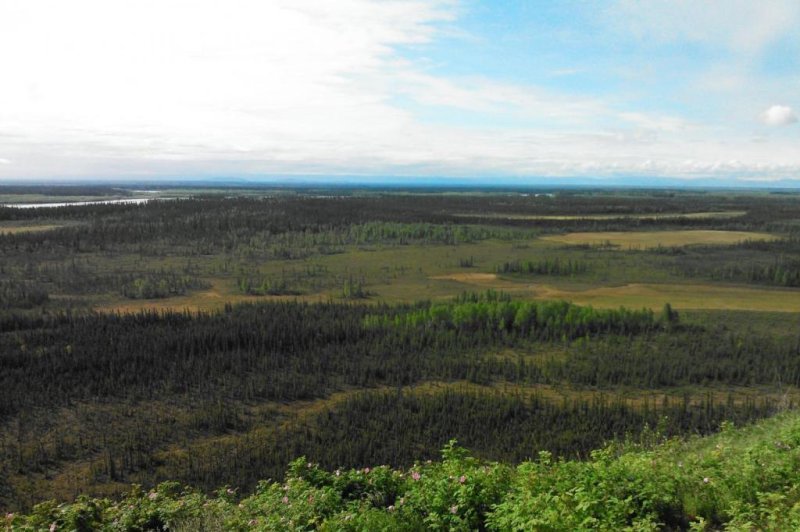When the permafrost in Alaska melts, the soil in bogs become waterlogged and microbes are forced to convert organic matter into methane. Photo by Rebecca Neumann/University of Washington
Feb. 4 (UPI) -- Analysis of a bog in Alaska suggests early spring rains cause permafrost to thaw and boost methane emissions.
According to observations made by researchers at the University of Washington, a 2016 spike in early spring rainfall caused permafrost to melt three weeks earlier than usual. As a result, plants began growing and methane-producing microbes proliferated.
The head start resulted in a 30 percent increase in methane released by the bog during 2016.
"Early rainfall sent a slog of warm water moving into our bog," Rebecca Neumann, an associate professor of environmental engineering, said in a news release. "We believe microbes in the bog got excited because they were warmed up, so they released nutrients from the soil that allowed more plant growth. Methane production and emission are tightly linked with soil temperature and plant growth."
The research -- published in the journal Geophysical Research Letters -- suggests permafrost bogs are sensitive to warm rain water. Scientists expect global warming to bring increased temperatures and increased precipitation to the Arctic. As a result, Arctic permafrost could produce more methane than previously anticipated.
Methane is a powerful greenhouse gas, and its increased concentration in the atmosphere is likely to accelerate global warming.
"For the last several years, scientists have been monitoring methane emissions, sedge plant growth and soil temperature at a variety of depths in and around a bog located 20 miles north of Fairbanks.
"We saw the plants going crazy and methane emissions going bonkers," Neumann said of their observations in 2016.
Rainfall was elevated in the region in both 2014 and 2016, but methane emissions in 2014 weren't elevated. The latest analysis showed the rainfall's early arrival in 2016 helps explain the rise in methane emissions.
In the spring, the ground is still colder than the air. Rain, which is the same temperature as the air, warms the bog's permafrost. When permafrost thaws, the bog's soil becomes waterlogged, limiting microbial access to oxygen. With no oxygen, the microbes must covert organic matter into fuel -- releasing methane in the process.
Thawing permafrost also fuels plant growth, which provides more organic matter for microbes to convert to methane.
"The plants are really doing two things," Neumann said. "They're providing yummy carbon that lets the microbes make more methane than they would have otherwise. The plants also provide a conduit that allows methane to escape into the atmosphere. They're a double whammy for methane production and emission."















